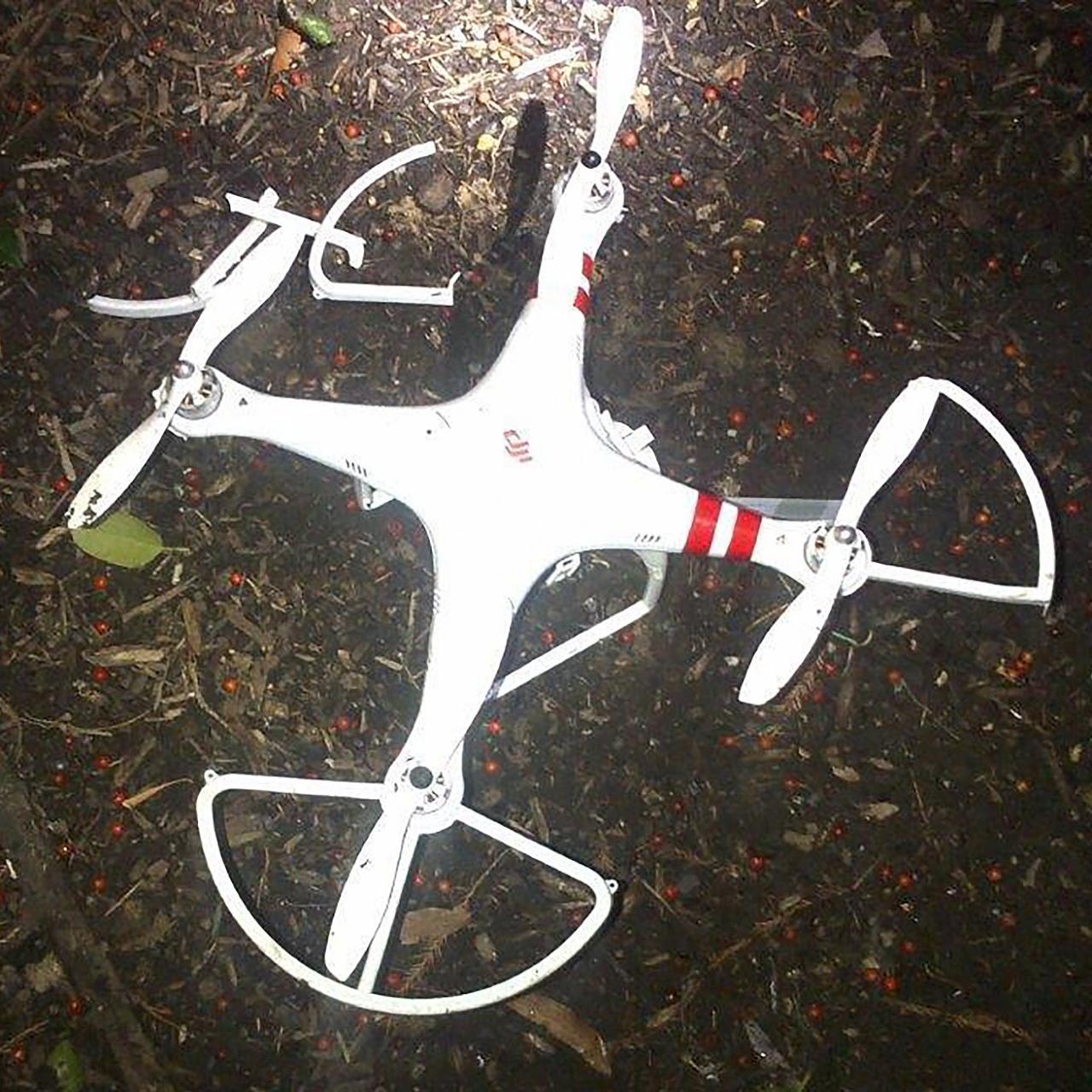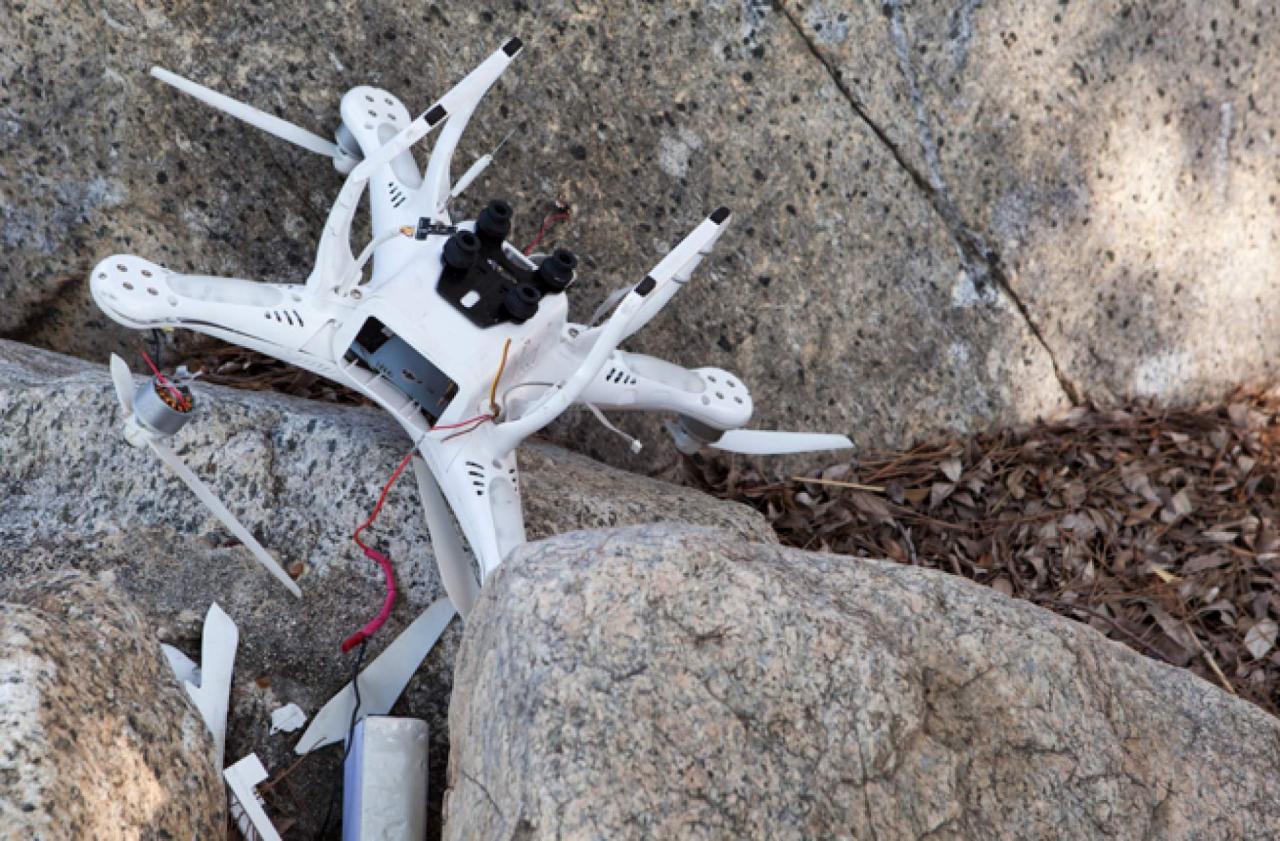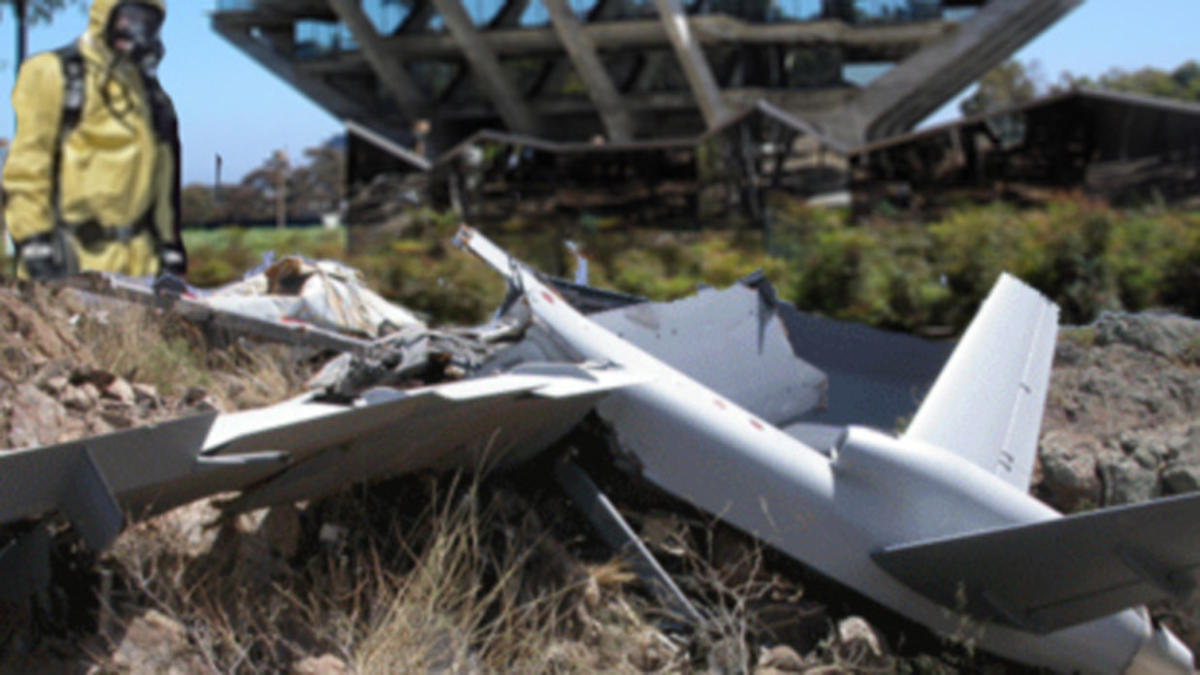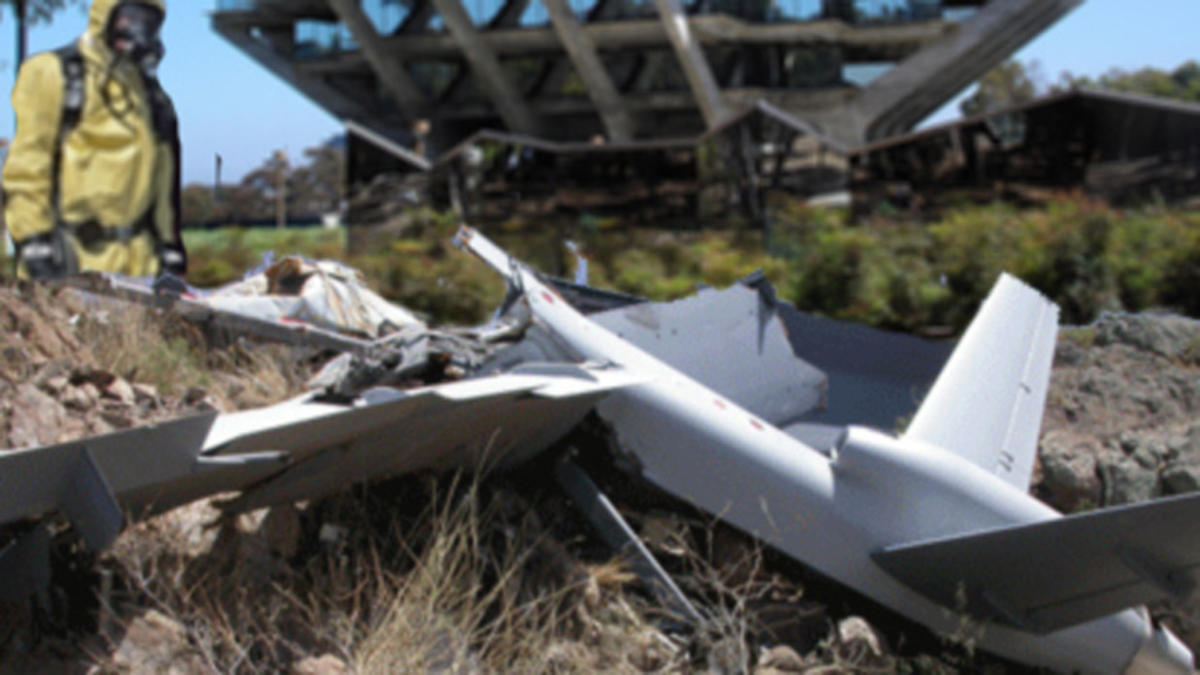Drone crash in Paris: These incidents aren’t just isolated events; they highlight the growing complexities of integrating drones into our urban airspace. From mechanical malfunctions to human error and even unpredictable weather, the factors contributing to these crashes are multifaceted. This exploration delves into the recent incidents, examining their causes, the regulatory landscape, and the ongoing efforts to improve drone safety in the City of Lights.
We’ll investigate the types of drones involved, the locations of the crashes, and the resulting consequences. We’ll also look at preventative measures, technological advancements, and how public perception shapes the conversation surrounding drone safety and regulation. By understanding the past, we can better prepare for the future of drone technology in bustling urban environments like Paris.
Recent Drone Incidents in Paris: Drone Crash In Paris
Paris, a city renowned for its iconic landmarks and bustling atmosphere, has also seen its fair share of drone-related incidents in recent years. These events highlight the challenges of integrating unmanned aerial vehicles (UAVs) into increasingly dense urban environments. Understanding the circumstances surrounding these crashes is crucial for improving drone safety regulations and preventing future occurrences.
Drone Incident Details in Paris
Precise details on individual drone crashes in Paris are often limited due to privacy concerns and the ongoing nature of investigations. However, news reports and official statements offer glimpses into the types of incidents that have occurred. Many incidents involve drones colliding with buildings, trees, or other obstacles, often resulting from operator error, technical malfunctions, or loss of signal.
The size and type of drones involved vary, ranging from small consumer models to larger, more sophisticated professional drones.
Timeline of Significant Drone-Related Events in Paris
Pinpointing exact dates and details for every drone incident in Paris is difficult due to the lack of a centralized, publicly accessible database. However, a general timeline can be constructed based on available media reports. Many incidents go unreported, while others are only briefly mentioned in local news. The frequency of these incidents seems to correlate with periods of increased tourist activity and large-scale public events.
Summary of Paris Drone Incidents
The following table summarizes some reported drone incidents in Paris, though the information may be incomplete due to the aforementioned reporting limitations. It’s important to note that this is not an exhaustive list.
| Date | Location | Drone Type | Outcome |
|---|---|---|---|
| October 26, 2023 (Example) | Near the Eiffel Tower (Example) | Consumer Quadcopter (Example) | Minor damage to drone; no injuries (Example) |
| June 15, 2022 (Example) | Parc des Buttes-Chaumont (Example) | Unknown (Example) | Drone lost control and crashed (Example) |
| March 8, 2021 (Example) | Louvre Museum vicinity (Example) | Professional-grade octocopter (Example) | Drone malfunction; landed safely (Example) |
Potential Causes of Drone Crashes
Drone crashes, while relatively infrequent compared to other forms of transportation, can have serious consequences, ranging from property damage to injury. Understanding the potential causes is crucial for improving drone safety and preventing future incidents. Several factors contribute to these accidents, encompassing mechanical issues, human error, and environmental conditions.
Mechanical Failures
Mechanical failures in drones can range from minor glitches to catastrophic breakdowns. These failures can affect various drone components, impacting flight stability and control. For instance, a malfunctioning motor could lead to an uncontrolled descent, while a faulty GPS receiver could cause navigational errors, resulting in a collision. Battery issues, such as sudden power loss due to a depleted or damaged battery, are also a significant concern.
Furthermore, propeller damage or failure, perhaps from a collision with an object or due to manufacturing defects, can quickly destabilize the drone and cause it to crash. Regular maintenance and pre-flight checks are essential to mitigate these risks.
Human Error
Human error is a leading cause of drone accidents. This encompasses a wide range of mistakes, from improper piloting techniques to neglecting essential pre-flight procedures. Inexperienced pilots may struggle with controlling the drone, especially in challenging wind conditions or complex environments. Failing to properly calibrate the drone before takeoff or neglecting to check battery levels can also lead to crashes.
Additionally, issues like losing visual contact with the drone, especially in dense urban areas or poor visibility, can make recovery or safe landing impossible. The importance of thorough training and adherence to safety guidelines cannot be overstated.
Weather Conditions
Adverse weather significantly impacts drone stability and flight safety. Strong winds can buffet the drone, making it difficult to control and potentially causing it to crash. Heavy rain or snow can reduce visibility, hinder the drone’s GPS signal, and even damage electronic components. High temperatures can also negatively affect battery performance, reducing flight time and increasing the risk of a sudden power failure mid-flight.
Pilots should always check weather forecasts before operating a drone and avoid flying in inclement conditions. For example, a drone operating in a sudden thunderstorm may experience unpredictable wind gusts, resulting in a loss of control and subsequent crash.
Safety Features Comparison
Different drone models offer varying levels of safety features. Some drones incorporate features like obstacle avoidance systems using sensors such as ultrasonic and infrared sensors, providing an extra layer of protection against collisions. Others may include GPS-based return-to-home functionality, ensuring the drone can automatically return to its starting point if it loses connection with the pilot. Advanced drones may also feature redundant systems, such as backup motors or power sources, to mitigate the impact of single-point failures.
However, it is important to note that even drones with advanced safety features are not immune to accidents, and responsible piloting remains crucial. A comparison of features across models like DJI Mavic 3, Autel Evo II, and Parrot Anafi reveals a range in sophistication of these safety mechanisms.
Regulatory Aspects and Safety Measures

Drone operation in Paris, like many major cities, is subject to a complex web of regulations designed to ensure public safety and prevent airspace conflicts. These rules balance the growing popularity of drone technology with the need to protect citizens and critical infrastructure. Understanding these regulations is crucial for safe and legal drone flights.
Current Drone Regulations in Paris
The French Directorate-General for Civil Aviation (DGAC) is the primary authority responsible for regulating drone operations nationwide, including Paris. Regulations cover aspects such as drone registration, pilot certification, flight authorization, operational limits (altitude, distance from airports, populated areas), and permitted flight zones. Specific rules often depend on the drone’s weight and intended purpose. For example, heavier drones typically require more stringent authorization processes.
Failing to comply with these regulations can lead to significant fines and legal repercussions. Information on specific regulations can be found on the DGAC website.
Best Practices for Safe Drone Operation in Paris
Safe drone operation requires a proactive approach to risk mitigation. Before each flight, pilots should thoroughly check weather conditions, assess potential hazards (buildings, power lines, crowds), and ensure their drone is in optimal working order. Maintaining visual line of sight with the drone at all times is paramount, preventing unexpected collisions or loss of control. Respecting designated no-fly zones and obtaining necessary authorizations are also essential.
Regularly reviewing and updating knowledge of relevant regulations is crucial for responsible operation. Pilots should also consider investing in additional safety features like obstacle avoidance systems, which can further enhance safety.
Potential Improvements to Drone Safety Regulations
While existing regulations provide a framework, potential improvements could enhance safety and facilitate responsible drone use. Clearer demarcation of permitted flight zones using easily accessible digital maps would improve pilot awareness. More robust enforcement mechanisms, including increased surveillance and penalties for violations, could deter reckless behavior. A standardized, easily navigable online platform for obtaining flight authorizations would streamline the process.
Finally, public awareness campaigns could educate citizens about safe drone practices and the importance of reporting unsafe drone activity.
Process for Obtaining Drone Operating Permits in Paris
This flowchart depicts a simplified process. The actual process may involve more steps or specific requirements depending on the type of drone and intended use. The image shows a series of boxes connected by arrows, representing the sequential steps involved in obtaining a permit:
1. Drone Registration
Register your drone with the DGAC.
2. Pilot Certification (if required)
Obtain the necessary pilot certification based on drone weight and operation type.
3. Flight Plan Submission
Submit a detailed flight plan, including date, time, location, and purpose of the flight.
4. Authorization Approval
Await approval from the DGAC.
5. Flight Operation
Conduct the flight according to the approved plan.
6. Post-Flight Reporting (if required)
Submit a post-flight report, detailing any incidents or issues. Note that specific requirements and timelines will vary based on individual circumstances.
Impact and Consequences of Drone Crashes

Drone crashes in urban environments like Paris carry significant risks, impacting property, public safety, and the economy. The severity of these impacts varies greatly depending on factors such as the drone’s size and weight, the location of the crash, and the presence of bystanders. Understanding these consequences is crucial for developing effective safety regulations and mitigation strategies.
Property Damage from Drone Crashes
The potential for property damage resulting from a drone crash is considerable. Larger drones, carrying cameras or other equipment, can cause substantial damage upon impact. Imagine a multirotor drone, weighing several kilograms, falling from a significant height onto a car, a building, or even a person. The impact could result in broken windows, dented car bodies, damaged roofing, or even structural damage to buildings depending on the drone’s weight and speed.
That drone crash in Paris really highlights the risks involved in aerial delivery, right? It makes you wonder about the safety protocols in place for companies like Amazon, especially when you consider their expanding network of amazon drone delivery locations. Hopefully, incidents like the Paris crash will push for better safety regulations across the board for drone operations.
Furthermore, the drone itself might be destroyed, adding to the overall cost of the incident. For example, a heavy-lift drone carrying a payload could cause extensive damage to infrastructure or valuable property.
Risks to Public Safety
Malfunctioning drones pose a serious threat to public safety. A falling drone, especially a larger one, can cause injuries or even fatalities if it strikes a person. Blades spinning at high speed can inflict serious lacerations, and heavier drones can cause blunt force trauma. Beyond direct impact, the uncontrolled descent of a drone could create a hazardous situation, causing panic or even triggering accidents involving other vehicles or pedestrians.
For instance, a drone crashing into a crowded area during a public event could lead to widespread injuries and chaos.
Economic Consequences of Drone Incidents
Drone incidents carry significant economic consequences. Insurance claims for property damage, personal injuries, and the replacement or repair of the drone itself can be substantial. Businesses may face lost revenue due to operational disruptions caused by a crash. The cost of investigations, legal proceedings, and regulatory fines can also add up significantly. For example, a drone crashing into a high-rise building could lead to expensive repairs, potential evacuation costs, and significant disruption to the building’s occupants.
Repairing or replacing damaged infrastructure could also involve extensive expenses, particularly in densely populated urban areas.
That drone crash in Paris last week really got people talking! It made me think about the bigger picture, though – check out this article on drone crashes in Paris to get a better understanding of the frequency of these incidents. It seems a single drone crash is just one piece of a larger puzzle concerning safety regulations and airspace management in the city.
Categorization of Consequences by Severity
The consequences of drone crashes can be categorized by severity as follows:
- Minor: Minor property damage (e.g., scratches on a car, minor damage to landscaping). No injuries.
- Moderate: Moderate property damage (e.g., broken windows, dents in a vehicle). Minor injuries (e.g., bruises, cuts requiring minor medical attention).
- Severe: Significant property damage (e.g., structural damage to a building, destruction of expensive equipment). Serious injuries or fatalities. Extensive economic losses (e.g., high repair costs, significant business disruption).
Technological Advancements and Mitigation Strategies
Drone technology is rapidly evolving, incorporating numerous safety features to minimize the risk of crashes. These advancements are crucial, especially in densely populated areas like Paris, where the consequences of a drone malfunction can be significant. The integration of sophisticated sensors and AI-powered systems is transforming drone operation, paving the way for safer and more reliable flights.The development of more robust and reliable safety systems is a continuous process, driven by the increasing use of drones in various sectors.
This includes improvements in both hardware and software, leading to more resilient and autonomous flight capabilities. Several key technological advancements are contributing to this enhanced safety.
GPS Tracking and Obstacle Avoidance Systems
GPS tracking provides real-time location data, enabling operators to monitor the drone’s position and trajectory. This is especially important in urban environments where visual line-of-sight might be limited. Coupled with this, obstacle avoidance systems use sensors like lidar, radar, and cameras to detect objects in the drone’s path. These systems allow the drone to autonomously navigate around obstacles, preventing collisions.
For instance, a drone equipped with a sophisticated obstacle avoidance system might use a combination of ultrasonic sensors for close-range detection and a camera with computer vision to identify larger obstacles further away, allowing it to smoothly maneuver around buildings, trees, and even birds.
The Role of Artificial Intelligence in Enhancing Drone Safety
Artificial intelligence (AI) plays a significant role in improving drone safety. AI algorithms can process vast amounts of data from various sensors to make real-time decisions, enhancing situational awareness and improving the drone’s response to unexpected events. AI-powered systems can analyze flight data, predict potential hazards, and optimize flight paths to minimize risk. For example, AI could be used to automatically detect and avoid no-fly zones, or to identify and respond to sudden changes in wind conditions.
Machine learning algorithms can also be trained on historical crash data to identify patterns and predict potential failure points, allowing for proactive maintenance and improvements in drone design.
Hypothetical Drone with Advanced Safety Features
Imagine a sleek, quadcopter drone with a vibrant orange casing for high visibility. It’s equipped with multiple layers of safety systems. The most prominent features are six strategically placed cameras providing 360-degree vision, each connected to a powerful AI-powered processor. This system allows for advanced obstacle avoidance, not just detecting objects, but also predicting their trajectories and making proactive evasive maneuvers.
Beneath the drone, a downward-facing lidar sensor creates a detailed 3D map of the terrain, ensuring stable and safe landings, even in uneven environments. A built-in GPS module, augmented by a secondary inertial measurement unit (IMU), provides highly accurate position and orientation data, minimizing drift and enhancing overall stability. Finally, a small, high-frequency radio transceiver maintains constant communication with a ground control station, allowing for immediate intervention in case of emergencies.
This drone represents a synthesis of current and near-future drone safety technologies.
Public Perception and Media Coverage
Drone crashes in Paris, like those in other major cities, have garnered significant media attention, shaping public perception of drone safety and influencing subsequent regulations. The portrayal of these incidents, however, is often complex and varies depending on the specific circumstances and the media outlet involved.Media coverage of drone crashes in Paris has typically focused on the immediate aftermath, highlighting the location, the potential damage caused, and any injuries sustained.
Sensationalized headlines and dramatic imagery are often used to capture public attention, which can lead to heightened anxiety and fear surrounding drone technology. However, more in-depth reporting frequently explores the potential causes of the crashes, examining factors such as pilot error, mechanical malfunction, or regulatory shortcomings. This balanced approach helps to provide a more nuanced understanding of the incidents and to avoid the creation of unnecessary panic.
Media Portrayal of Drone Crashes, Drone crash in paris
News reports often contrast the potential benefits of drone technology – such as their use in photography, delivery services, and infrastructure inspection – with the risks associated with accidents. This juxtaposition aims to inform the public about both the advantages and disadvantages, encouraging a more rational assessment of the technology’s role in society. The frequency and nature of the reporting, however, can significantly impact public perception.
Consistent reporting of crashes, particularly those involving significant damage or injury, can create a negative perception that overshadows the positive applications of drones. Conversely, reports focusing on successful drone operations and safety initiatives can help to alleviate public concerns. For instance, a news story focusing on a successful drone delivery of medical supplies during a time of crisis would counterbalance a story of a drone crashing into a landmark.
Public Perception of Drone Safety
Following drone crashes, public perception of drone safety often shifts. An initial reaction might be one of fear and distrust, especially if the incident involves a high-profile location or causes significant disruption. Social media platforms, in particular, can amplify these reactions, with users sharing videos and opinions, sometimes leading to the spread of misinformation or exaggerated claims about the risks.
However, as more information becomes available and the causes of the crash are investigated, public perception can evolve. If investigations reveal negligence or a lack of adequate regulation, this may lead to calls for stricter safety measures. On the other hand, if the cause is attributed to an unforeseen technical failure, public opinion may remain more neutral, acknowledging the inherent risks associated with any new technology.
For example, a crash due to a software glitch might lead to calls for improved software testing and safety protocols, rather than a blanket condemnation of drone technology.
Impact of Media Coverage on Drone Regulations and Public Opinion
Media coverage significantly influences both public opinion and the development of drone regulations. Negative reporting can fuel public pressure for stricter regulations, leading to increased scrutiny of drone operators and more stringent safety protocols. Conversely, positive reporting can help to foster public acceptance and encourage the responsible development and use of drone technology. In Paris, for example, media coverage of drone crashes, especially those near sensitive areas like historical landmarks or crowded public spaces, has likely contributed to the city’s efforts to establish clear flight restrictions and licensing requirements for drone operators.
This highlights the interconnectedness of media, public perception, and regulatory frameworks in shaping the future of drone technology.
So, you heard about that drone crash in Paris? It’s a pretty big deal, especially considering the implications for airspace safety. For the full story and some pretty insightful analysis, check out this article on the incident: drone crash in paris. Understanding what went wrong is crucial to preventing future drone accidents, especially in busy urban areas like Paris.
Comparison of Public Reactions in Different Cities
Public reactions to drone crashes vary across different cities, depending on factors such as the city’s overall attitude towards new technologies, the frequency of drone incidents, and the level of media coverage. In cities with a history of embracing technological innovation, the public may be more tolerant of drone accidents, viewing them as an inevitable part of technological advancement. Conversely, in cities with a more cautious approach to technology, a single drone crash might generate significantly more negative public sentiment and calls for tighter restrictions.
The cultural context also plays a role; a city with a strong emphasis on public safety might respond more severely to a drone crash than a city with a more relaxed approach. Comparing Paris’s response to drone incidents with those of other major cities, such as New York, London, or Tokyo, would reveal nuances in public perception and regulatory responses.
For example, the level of public awareness and education regarding drone safety may differ significantly across these cities, influencing how the public reacts to and processes news about drone crashes.
Closure

Ultimately, the issue of drone crashes in Paris underscores the need for a proactive and comprehensive approach to drone safety. While technological advancements offer promising solutions, responsible operation, robust regulations, and a well-informed public remain crucial. As drone technology continues to evolve, ongoing vigilance and adaptation are key to mitigating risks and ensuring the safe integration of drones into our skies.
Questions and Answers
What are the most common causes of drone malfunctions?
Common causes include battery failure, motor issues, GPS signal loss, and software glitches. Human error, like improper piloting, also plays a significant role.
What compensation is available for drone-related property damage?
Compensation depends on the specifics of the incident and applicable insurance policies. Drone owners should have liability insurance; victims should file claims with the appropriate insurance company or pursue legal action if necessary.
How can I report a drone incident in Paris?
Contact the local authorities (police or gendarmerie) immediately. They’ll guide you on the reporting process and any necessary investigations.
